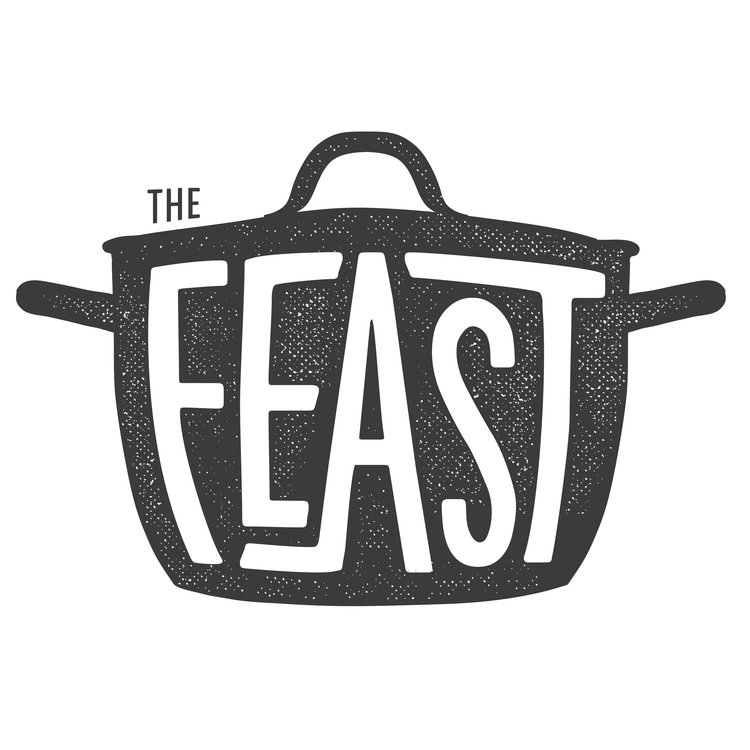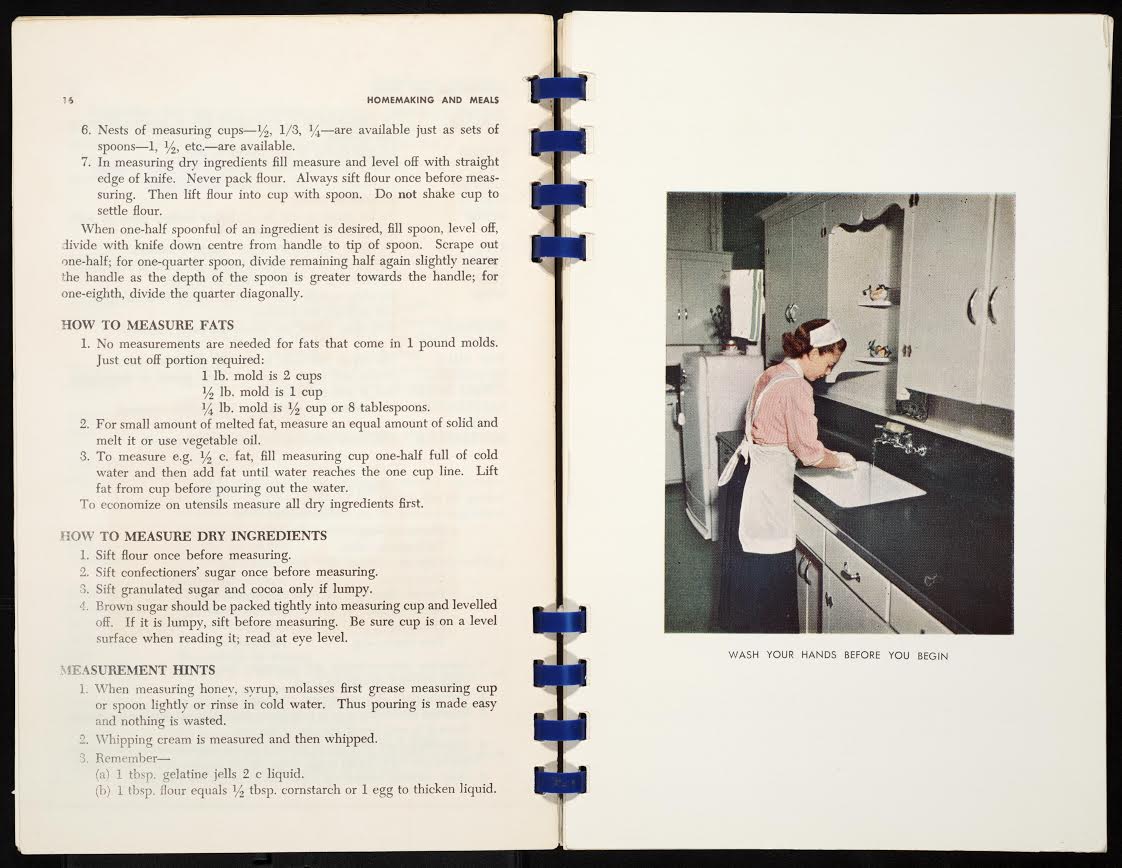Exhibition Sneak Peek! Mixed Messages: Making and Shaping Culinary Culture in Canada
La cuisiniere Five Roses. Lake of the Woods Milling Company Limited, 1915. Illustrated by M.C. Perley. Courtesy of the Thomas Fisher Rare Book Library, Toronto.
The Feast is headed to the library this week with a special sneak peek of the Thomas Fisher Rare Book Library's upcoming exhibition, Mixed Messages: Making and Shaping Culinary Culture in Canada. We'll speak with one of the co-curators of the exhibit, Liz Ridolfo, as she takes us through a chronological culinary tour of Canada. From the earliest guides on maple syrup to the growth of university domestic science departments to Depression-era recipes for magical mystery cake, we're give you a sneak peek at some of the hidden treasures in the exhibition which runs all summer 2018 in the heart of Toronto, Ontario.
Written and Produced by Laura Carlson
Sound Engineering by Mike Portt
Special Guest: Liz Ridolfo, Special Collections Projects Librarian, Thomas Fisher Rare Book Library
Featured Exhibition: Mixed Messages: Making & Shaping Culinary Culture in Canada
The exhibition runs 22 May to 17 August 2018 at the Thomas Fisher Rare Book Library in Toronto, Ontario
The exhibition will display a tasty arrangement of rare cookbooks, periodicals (magazines), manuscripts and culinary objects from the 1820s to the 1960s. This exhibition will examine how the culinary culture of Toronto and surrounding areas was made and shaped by those who participated in or were excluded from the making and using of culinary materials. On display will be many scarce items which are part of our collections due to the generous donations of Mary Williamson. Objects on display include a copy of the Frugal Housewife's Manual, the first cookbook written and published in Canada, posters advertising the beloved Canadian Cook Book, and an English curry bottle from the late 1800s (with curry still inside!).
Curators:
Nathalie Cooke, Professor and Associate Dean (Library Rare and Special Collections), McGill University.
Irina D. Mihalache, Assistant Professor, Museum Studies, Faculty of Information
Elizabeth Ridolfo, Special Collections Projects Librarian, Thomas Fisher Rare Book Library
Curatorial Assistants, MacLean Hunter Gallery: Cassandra Curtis & Sadie MacDonald, Master of Museum Studies Candidates
Follow along with the Exhibition's Blog!
Some Featured Images From the Exhibition:
Culinary recipe book. Maria Ann Banner Price, [Montreal : 183-?]. Courtesy of the Thomas Fisher Rare Book Library, Toronto.
Food Chemistry Honour Laboratory Household Science Building at the University of Toronto, 1913. Courtesy of the Thomas Fisher Rare Book Library, Toronto.
Homemaking and meals for instruction in Home Economic Education in Toronto Schools, 1957.
The Cookbook of Lucy Ronalds Harris (and uncle?)
One of the prizes of the Fisher's exhibition is this handwritten cookbook from mid-19th century London, Ontario. This multi-use book was probably used by Lucy Ronalds Harris and her family when they lived at their home, Eldon House, and includes not only cooking recipes but also ledgers, genealogical information, and even advice on how to prepare medicine and treat the ill. The image below shows how such a book could be used for various purposes over the course of its life. Calculations are shown at the top, followed by the signature of Lucy's uncle, John Ronalds, along with finally Lucy's name and information about their home.
Domestic Science at the University of Toronto
One of the first University faculties dominated by women, the Domestic Science program actually began as a separate institution from the University of Toronto. Spearheaded by local philanthropist, Lillian Massey, she donated the funds for a purpose-built university building for the faculty, which still stands on the corner of Bloor and Avenue Road in Toronto. With state of the art chemistry and kitchen facilities, the building also housed some of the first university facilities open to women attending the University of Toronto, including a library, reading room, and even pool!
The basement pool in the Household Science building, fondly known as "the bathtub"
Taking a degree in Household Science (later known as Domestic Science) was no mean feat. Students were expected to take courses in language, math, chemistry, biology, and food sciences. Below is one of the annual examinations for household science from 1907.
Magical Mystery Cake!
No, it's not a culinary tribute to the Beatles' 1967 album. The trend for mystery cakes seems to have arisen around the 1920s and 1930s in the US and Canada during the Depression. To keep baking costs low, inventive bakers began substituting unusual or "mystery" ingredients into their recipes. The most famous example, a version of which was even included in the first edition of The Joy of Cooking in 1931, was a cake recipe that featured tomato soup as an ingredient. Its peculiar recipe but delicious result has attracted the notice of more than one culinary historian.
But this era was also famous for the rise of home cooking contests, often sponsored by food brands or companies. Magic Baking Powder apparently decided to lean heavily into the trend of mystery cakes and launched a Canada-wide contest, asking women to submit recipes for their best "magical mystery cake". Recipes, of course, would have to use the key ingredient of Magic Baking Powder.
The winning recipes were eventually compiled into a branded booklet published by the baking powder company in the early 1930s (now available online, courtesy of Michigan State University). Although it didn't feature any tomato soup cake recipes, it did include a few recipes with mashed potatoes and even cold coffee as ingredients. We decided to make one of these recipes to test out this magic and mysterious trend for ourselves.
Our efforts probably won't be included in any national booklet, but the recipe was delicious!
Further Reading & Resources:
Check out these wonderful resources to Canadian culinary history, including the most recent edition of Catharine Parr Traill's The Female Emigrant's Guide, an early copy of which is featured in the Fisher's exhibition!




![Culinary recipe book. Maria Ann Banner Price, [Montreal : 183-?]. Courtesy of the Thomas Fisher Rare Book Library, Toronto.](https://images.squarespace-cdn.com/content/v1/572def689f72664ead51f242/1525379094303-QDBMWI9550K46UJWDMHM/Maria+Price%2C+1830s+recipe+book.jpg)













